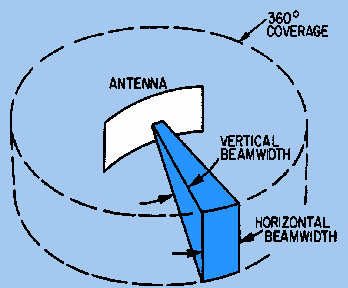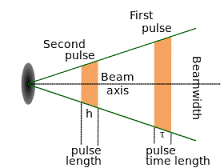S-band radars are suited to long range landfall navigation and early detection of targets for collision avoidance, due to their superior range and the cohesive quality of their pulses. On the negative side 10 cm radars require a larger scanner, greater power and often a longer pulse length resulting in a loss of definition at short ranges.
A 3 cm radar is nearly always the preferred choice for small craft due to the greater power and scanner size requirements of 10 cm radar.
What are characteristics of a RADAR?

- VERTICAL BEAMWIDTH (VBW):It is the vertical angle at the scanner contained between the upper & the lower edges of the radar sets beam. As per the IMO standards the radar set should function if the vessel is rolling or pitching +_( PLUS & MINUS) 10 deg without deterioation.
Marine sets have a VBW of 15-30 deg.
- HORIZONTAL BEAM WIDTH (HBW):
It is the horizontal angle at the scanner contained between the leading & the trailing edge of the radar beam . It causes all the targets to appear larger in azimuth by an amount equal to half the HBW .
3. PULSE LENGTH:
Due to the pulse length the point of the PPI appears to have a radial depth of half PL in meters. It is the time  interval between the time taken by the pulse to leave the leading and the trailing egdes.
interval between the time taken by the pulse to leave the leading and the trailing egdes.
4. PULSE REPITION FREQUENCY/(PRF):
It is the number of pulses set out through the scanner in one second. It is between 500-4000. Longer ranges have low PRF .Shorter ranges need high PRF for better picture resolution.
5. WAVELENGTH:
After RADAR energy left the scanner the path energy & travel are influenced by

